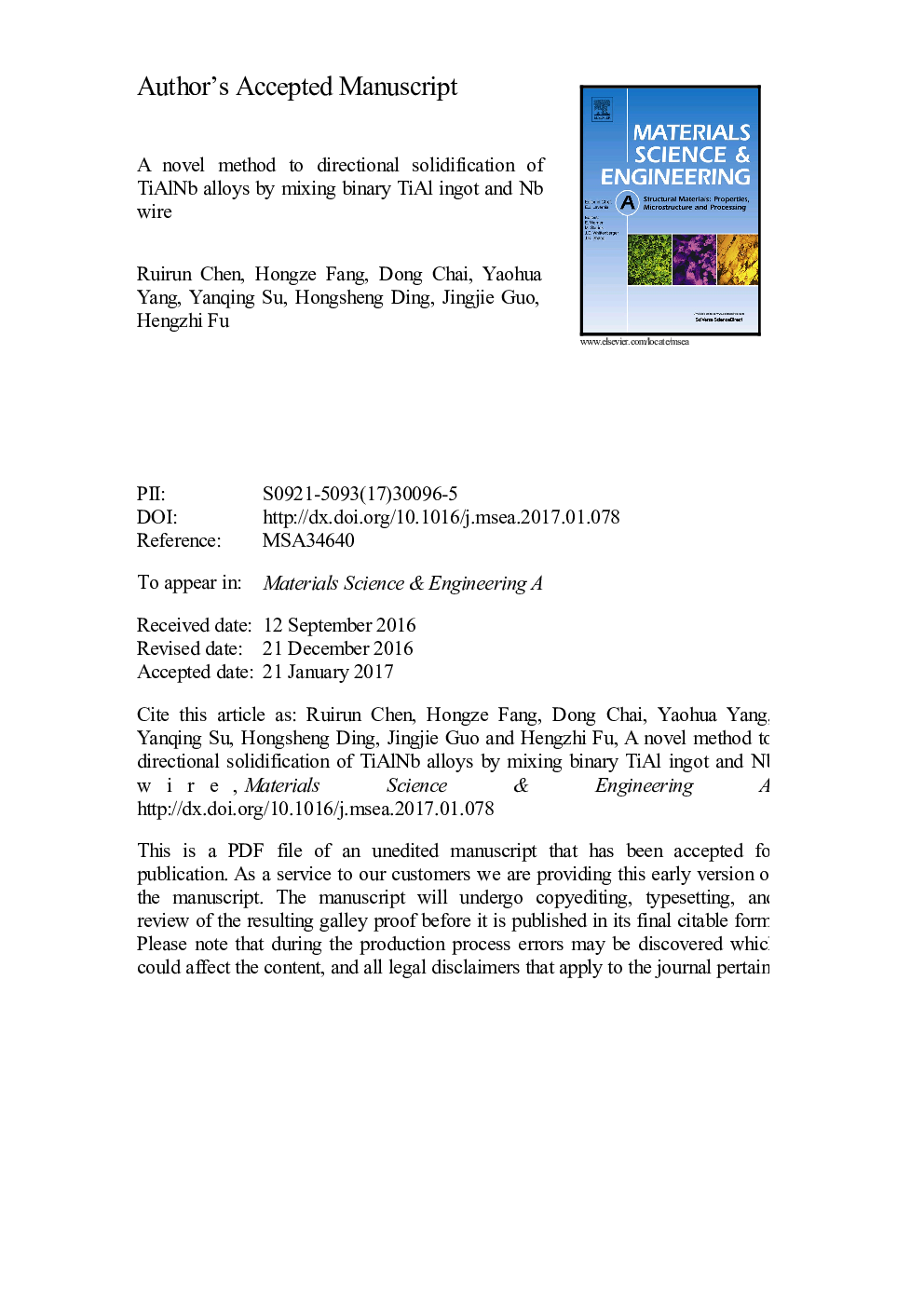| Article ID | Journal | Published Year | Pages | File Type |
|---|---|---|---|---|
| 5456254 | Materials Science and Engineering: A | 2017 | 20 Pages |
Abstract
The method of continuous melting and casting was used in the research to attempt to acquire the ternary directionally solidified Ti-Al-Nb alloy by once casting. It was investigated about microstructure and mechanical properties of the Ti44Al2Nb alloy by changing the temperature gradient. Results show that the lamellar spacing decreased to 1.25 µm, when the temperature gradient increases and the composition is relatively uniform in different regions. The tensile strength, the compressive strength and the fracture toughness of Ti44Al2Nb alloy is 455 MPa, 1770 MPa and 23.5 MPa m1/2 respectively, under the parameters of 50 kW and 0.5 mm/s. The high temperature compressive strength increases, when the strain rate increases and temperature decreases. Because the large strain rate shortens the strain time and piles up dislocations. Another, the low temperature provides the less driving force of dislocation movement. To observe the crack propagation process and the fracture morphology, the fracture mode contains trans-lamellar fracture and interface de-lamination. The method is a feasibility way to prepare the directionally solidified TiAlNb alloy and to add the high-melting-point element into microstructure directly.
Keywords
Related Topics
Physical Sciences and Engineering
Materials Science
Materials Science (General)
Authors
Ruirun Chen, Hongze Fang, Dong Chai, Yaohua Yang, Yanqing Su, Hongsheng Ding, Jingjie Guo, Hengzhi Fu,
